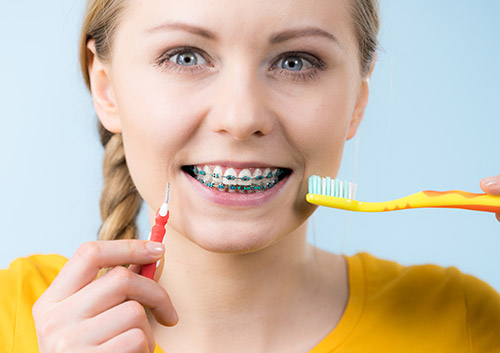Can Toothpaste Repair Tooth Decay?
December 17th, 2025

It seems like the ads are everywhere these days—repair your enamel and reverse tooth decay with a tube of toothpaste! Are these claims too good to be true? Let’s dive into the science of tooth decay—how decay develops and how (and if!) it can be reversed.
Teeth can stand up to the powerful pressures of biting and chewing because over 95% of our enamel is made up of minerals. Calcium and phosphate ions in our teeth bond to form a crystal structure called hydroxyapatite. Because of the strength of this crystalline design, tooth enamel is the hardest substance in our bodies, even stronger than our bones.
But bones, like most other parts of our bodies, are living tissue, which means that they can create new cells to replace old or damaged cells. Tooth enamel can’t regenerate new cells to repair itself. This means that when a cavity has made a hole in the tooth, the enamel can’t grow back. And, while enamel structure is very strong, it’s also vulnerable to damage—specifically, damage from acids.
Our teeth are exposed to acids throughout the day, whether they are acids created by plaque bacteria or the acidic foods and drinks we consume. Acids dissolve mineral bonds, stripping calcium and phosphate minerals from the enamel and leaving weak spots in the tooth surface. This process is called demineralization. Demineralization is the first stage of tooth decay.
The good news? Our bodies are designed with a built-in defense mechanism to prevent demineralization from causing lasting damage. All through the day, saliva helps wash away acids in the mouth and bathes our teeth with new calcium and phosphate ions. These ions bond with the calcium and phosphate in our enamel, restoring enamel strength. This protective repair process is called remineralization.
Now for the bad news. In the tug of war between demineralization and remineralization, saliva can only do so much. If your diet is heavy with acids, if you don’t brush away acid-producing plaque bacteria regularly, if you eat a lot of the sugars and starches which feed plaque bacteria, the remineralizing effects of saliva can’t keep up with the demineralizing effects of acids.
The first visible sign of demineralization is often a white spot on the tooth where minerals have been stripped from enamel. Studies have shown that enamel-strengthening toothpaste can be effective in this very first stage of tooth decay. Toothpastes which advertise enamel repair generally contain one or more of these ingredients:
- Calcium Phosphate
- Hydroxyapatite
- Fluoride
Toothpastes with calcium phosphate or hydroxyapatite contain calcium and phosphate minerals, the building blocks of tooth enamel. Studies have suggested that these minerals can replace the calcium and phosphate ions stripped from enamel. These toothpastes may or may not contain fluoride, which is something you should discuss with your dentist before deciding on a specific toothpaste.
Fluoride toothpastes remineralize enamel—and more! Fluoride ions are attracted to the tooth’s surface, and, when fluoride ions join with the calcium and phosphate ions there, they form fluorapatite. Fluorapatite crystals are larger, stronger, and more resistant to acids than hydroxyapatite crystals. And, once bonded with tooth enamel, fluoride attracts the calcium and phosphate ions in saliva to remineralize the teeth more quickly.
Why consider enamel-repair toothpaste?
Once enamel is gone, it’s gone for good. If excess demineralization isn’t treated, a weak spot on the tooth surface will continue to erode, growing bigger and deeper until it becomes a hole in the enamel. This is a cavity, and your dentist will need to treat and repair your tooth to prevent the cavity from growing and potentially exposing the tooth’s pulp to bacteria and infection.
If you wear braces, you want to be especially careful about excess demineralization. Because it can be hard to brush and floss effectively with braces, white spots and discolored patches are a common concern for those with braces, especially on the enamel around brackets.
Talk to Dr. Gregory Dyer at our Tampa office about which toothpastes can help restore a healthy balance between the ongoing cycles of demineralization and remineralization when you have braces. While tooth-repair toothpaste can’t fix cavities, these products can often strengthen demineralized enamel and reverse this earliest stage of tooth decay.











 Website Powered by Sesame 24-7™
Website Powered by Sesame 24-7™